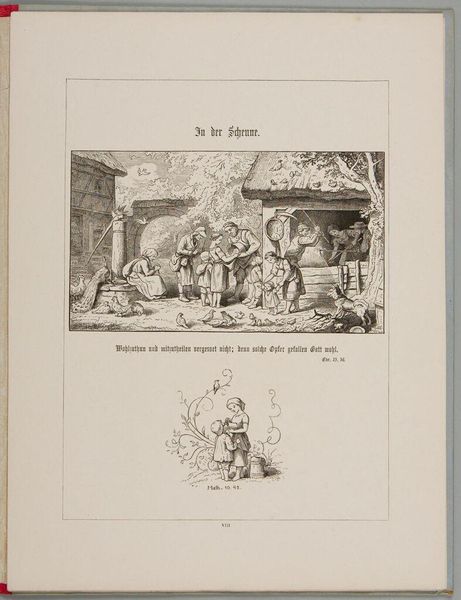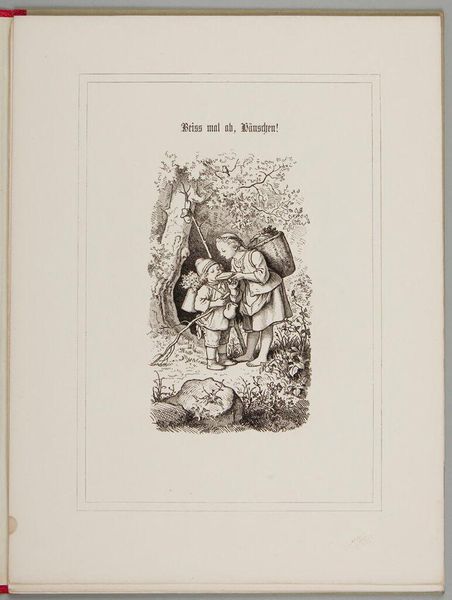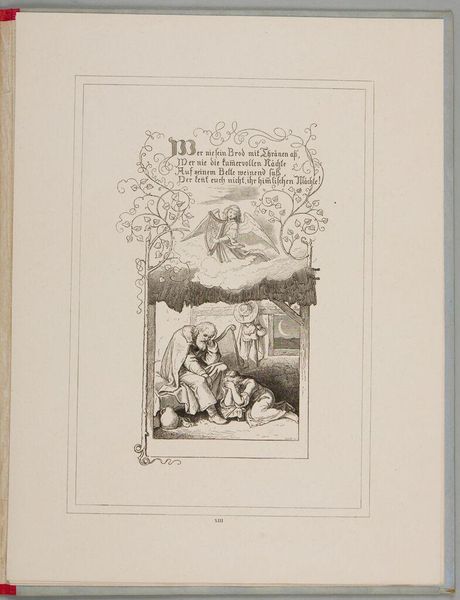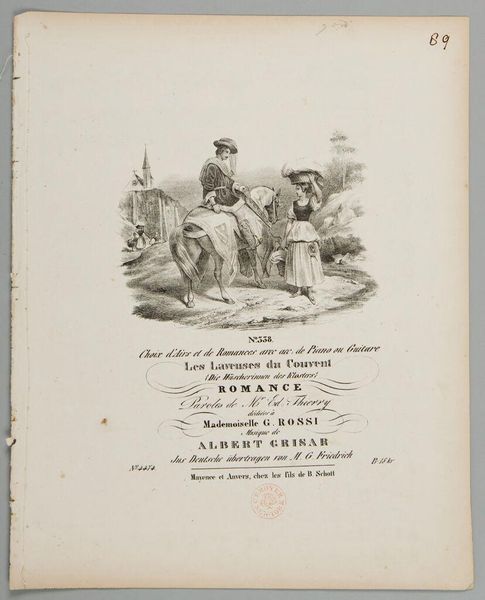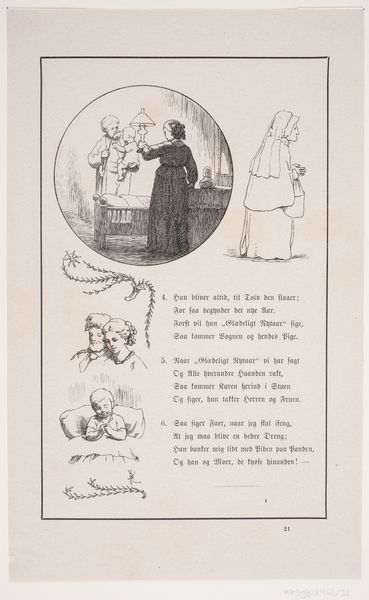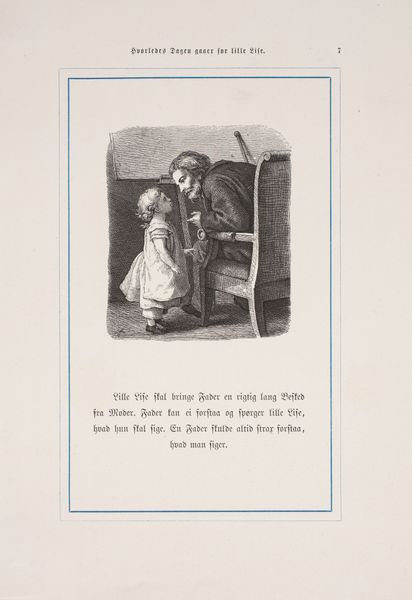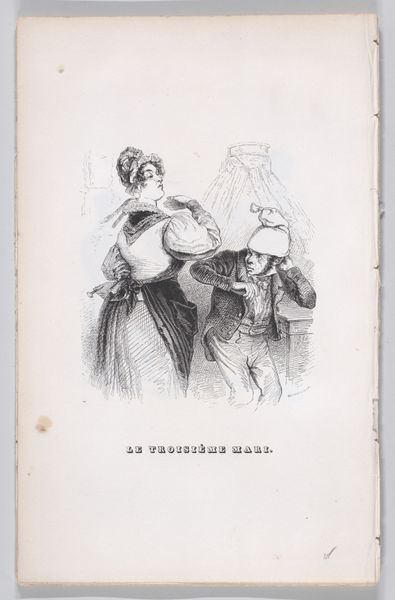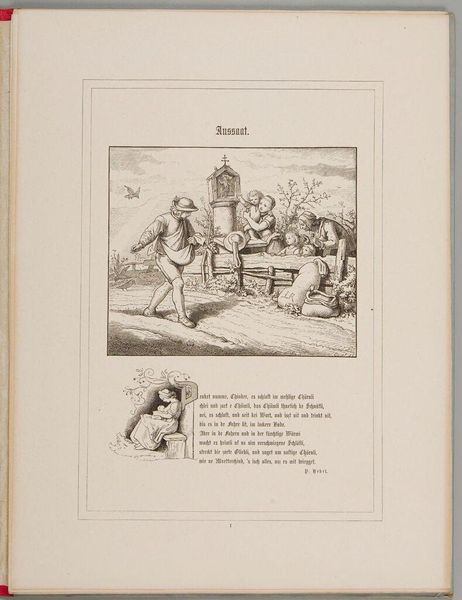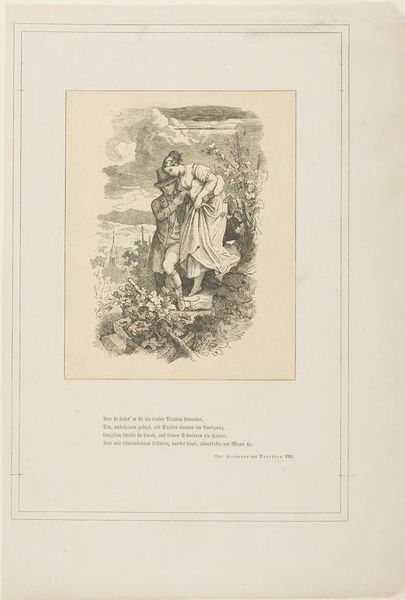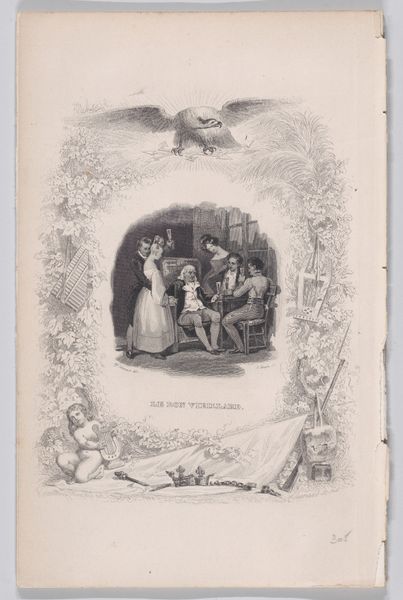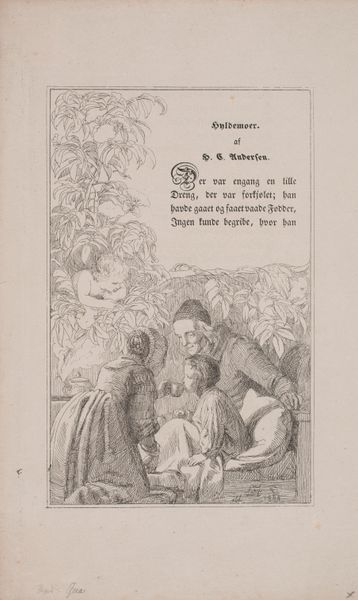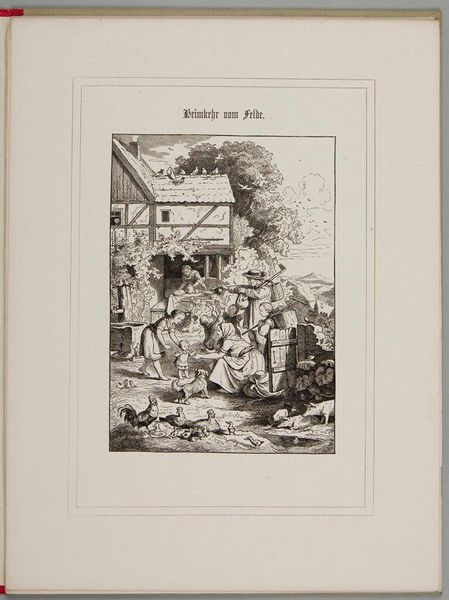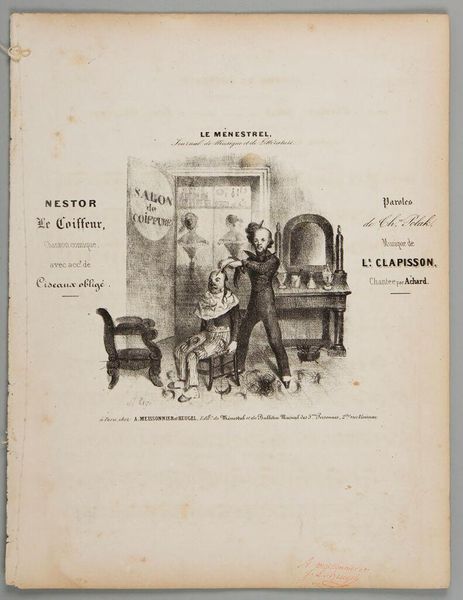
Alte und neue Kinderlieder, Fabeln, Sprüche und Räthsel 1849
0:00
0:00
drawing, print, paper, ink
#
drawing
#
narrative-art
# print
#
book
#
figuration
#
paper
#
ink
#
romanticism
#
genre-painting
Dimensions: Overall: 9 5/16 x 7 5/16 x 15/16 in. (23.6 x 18.5 x 2.4 cm)
Copyright: Public Domain
Curator: Looking at this piece by Adrian Ludwig Richter, created in 1849, you are immediately transported to a bygone era. It’s a print on paper with ink, part of a book titled "Alte und neue Kinderlieder, Fabeln, Sprüche und Räthsel" – Old and New Children’s Songs, Fables, Sayings and Riddles. Editor: Yes, a wave of sentimentality washes over you! The composition, rendered in fine lines, gives off a homely and gentle atmosphere. One could interpret the theme to be comfort or longing for an easier, happier past, although the ink on paper would be a typical media choice given it’s an illustration inside a mass-produced book. Curator: It speaks volumes about the materials that it was bound into a children's book, indicating accessibility and the intention for domestic consumption. Romanticism, as a style, often looks back to an imagined, simpler time, idealizing the familial and the rural, and this piece really nails the thematic elements of romanticism and genre painting. Editor: Agreed. Examining the context, this image could evoke complex socio-economic conditions of the 19th century. The rise of Romanticism, in this moment, served in some capacity as an escape from burgeoning industrial labor, with social inequities and harsh realities. Note the attention Richter has given to the Christmas tree and its ornaments; it gives the space an enchanted aura. Curator: Precisely. And the artist’s process of translating complex emotional states and societal narratives onto a readily reproducible format raises questions about artistic production and labour. Also notice the composition itself is geared toward an assembly line printing system, allowing many images to be produced at a fast and continuous rate. Editor: On the other hand, there are also complex, perhaps subtle cultural dimensions at play. Christmas wasn’t a universal celebration at this time. This could also reinforce very particular socio-economic, in this case Christian, standards on family structures, and values for a widespread and youthful audience. Curator: The choice of paper and ink signals that the message could spread quickly and economically through homes. Editor: Yes, it makes us reconsider the construction and even consumption of innocence, constructed to hide broader inequalities of labour and other modes of life from children. The scene isn’t without social narrative either; look at how much weight this one illustration places on themes that continue to echo through today. Curator: Agreed. From a material perspective, this modest print provides an interesting lens through which we might view industrial growth and mass communication. Editor: A sentimental glimpse with unexpected social textures—always ripe for interrogation and dialogue!
Comments
No comments
Be the first to comment and join the conversation on the ultimate creative platform.
